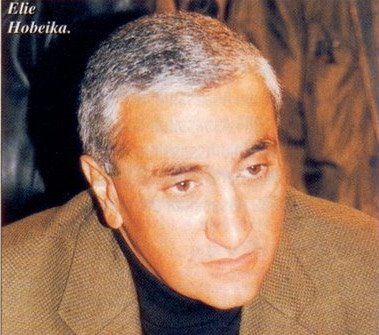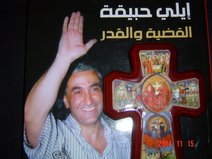
September , 2010 -- UN Congo report confirms genocide
A draft 545-page UN report on atrocities committed in the Democratic Republic of Congo (DRC)concludes something that this editor revealed in two books, "Genocide and Covert Operations in Africa 93-99" and "Jaded Tasks," that the U.S.-backed forces of Rwandan dictator Paul Kagame were responsible for mass genocide in the DRC since his forces first invaded the country in 1996.
Kagame has enjoyed the support of successive U.S. administrations -- Clinton, Bush, and Obama -- and he is considered the darling of such pro-Israeli groups as the US Holocaust Memorial Museum because he has cleverly managed to hook his "Tutsi victims of genocide" wagon to the Holocaust network in the United States and elsewhere.
However, the draft UN report paints a much different picture of Kagame -- a man who presided over unspeakable genocide in the DRC that may have cost the lives of some five million people since the mid-1990s.
On May 17, 2001, this editor testified on "Suffering and Despair: Humanitarian Crisis in the Congo" and a hearing before the Subcommittee on International Operations and Human Rights of the Committee on International Relations, House of Representatives. Facts on the U.S. involvement in the Rwandan genocide were provided to the committee, but the U.S. military relationship with Kagame only grew stronger. From the testimony:
"Prior to the first Rwandan invasion of Zaire/DRC in 1996, a phalanx of U.S. intelligence operatives converged on Zaire. Their actions suggested a strong interest in Zaire’s eastern defenses. The number-two person at the U.S. Embassy in Kigali traveled from Kigali to eastern Zaire to initiate intelligence contacts with the Alliance of Democratic Forces for the Liberation of Congo-Zaire (AFDL-CZ) rebels under the command of the late President Laurent Kabila. The Rwandan embassy official met with rebel leaders at least twelve times. A former U.S. ambassador to Uganda – acting on behalf of the U.S. Agency for International Development (USAID) -- gathered intelligence on the movement of Hutu refugees through eastern Zaire. The DIA’s second ranking Africa hand, who also served as the U.S. military attaché in Kigali, reconnoitered the Rwandan border towns of Cyangugu and Gisenyi, gathering intelligence on the cross border movements of anti-Mobutu Rwandan Tutsis from Rwanda.
In November 1996, U.S. spy satellites and a U.S. Navy P-3 Orion were attempting to ascertain how many Rwandan Hutu refugees were in eastern Zaire. The P-3 was one of four stationed at old Entebbe Airport on the shores of Lake Victoria. Oddly, while other planes flying over eastern Zaire attracted anti-aircraft fire from Kabila’s forces, the P-3s, which patrolled the skies above Goma and Sake, were left alone. Relying on the overhead intelligence, U.S. military and aid officials confidently announced that 600,000 Hutu refugees returned home to Rwanda from Zaire. But that left an estimated 300,000 unaccounted for. Many Hutus seemed to be disappearing from camps around Bukavu.
By December 1996, U.S. military forces were also operating in Bukavu amid throngs of Hutus, less numerous Twa refugees, Mai Mai guerrillas, advancing Rwandan troops, and AFDL-CZ rebels. A French military intelligence officer said he detected some 100 armed U.S. troops in the eastern Zaire conflict zone. Moreover, the DGSE reported the Americans had knowledge of the extermination of Hutu refugees by Tutsis in both Rwanda and eastern Zaire and were doing nothing about it. More ominously, there was reason to believe that some U.S. forces, either Special Forces or mercenaries, may have actually participated in the extermination of Hutu refugees. The killings reportedly took place at a camp on the banks of the Oso River near Goma. Roman Catholic reports claim that the executed included a number of Hutu Catholic priests. At least for those who were executed, death was far quicker than it was for those who escaped deep into the jungle. There, many died from tropical diseases or were attacked and eaten by wild animals.
America’s policy toward Africa during the past decade, rather than seeking to stabilize situations where civil war and ethnic turmoil reign supreme, has seemingly promoted destabilization. Former Secretary of State Madeleine Albright was fond of calling pro-U.S. military leaders in Africa who assumed power by force and then cloaked themselves in civilian attire, 'beacons of hope.'
In reality, these leaders, who include the current presidents of Uganda, Rwanda, Ethiopia, Angola, Eritrea, Burundi, and the Democratic Republic of the Congo preside over countries where ethnic and civil turmoil permit unscrupulous international mining companies to take advantage of the strife to fill their own coffers with conflict diamonds, gold, copper, platinum, and other precious minerals – including one – columbite-tantalite or 'coltan' -- which is a primary component of computer microchips and printed circuit boards.
SUMMARY It is beyond time for the Congress to seriously examine the role of the United States in the genocide and civil wars of central Africa, as well as the role that PMCs currently play in other African trouble spots like Nigeria, Sierra Leone, Equatorial Guinea, Angola, Ethiopia, Sudan, and Cabinda. Other nations, some with less than stellar records in Africa – France and Belgium, for example – have had no problem examining their own roles in Africa’s last decade of turmoil. The British Foreign Office is in the process of publishing a green paper on regulation of mercenary activity. At the very least, the United States, as the world’s leading democracy, owes Africa at least the example of a critical self-inspection."
The final UN report, which has been rejected by Kagame, is delayed for official release until October 1. There is informed speculation that Rwanda's allies, Israel and the United States, are applying pressure on U.N. High Commissioner for Human Rights Navi Pillay to suppress items in the report. Pillay has agreed to publish contradictory comments with the report's release. The report covers atrocities committed in the DRC between 1993 and 2003.
The draft UN report does mention unspecified foreign nationals in the DRC who contributed to the genocide but it fails to mention their countries of origin. The biggest foreign offenders, other than Kagame's Rwandan Tutsis, were Americans, Israelis, French, British, Belgians, Ugandans, Ukrainians, and Russians.
One of the worst massacres of Rwandan Hutu refugees by invading Kagame troops and their Congolese Tutsi allies occurred in the DRC town of Mbandaka. The name should go down in history along with Lidice, Oradour-sur-Glane, and Sobibor as places where unspeakable genocide took place. Rwandan Hutus, escaping from Kagame's murderous forces in Rwanda, found refuge in and around Mbandaka, in the northern DRC. Some examples from the UN report of what occurred there in 1997. {APR is Rwandan Patriotic Army of Kagame, AFDL is Alliance of Democratic Forces for the Liberation of the Congo, led by Kagame's ally and later DRC President Laurent D. Kabila, assassinated in 2001 likely on Kagame's orders):
"On 13 May 1997, in the presence of a number of APR senior figures, AFDL/APR units killed at least 140 refugees in the village of Wendji. Upon their arrival in the village, the soldiers told the Zairians not to be afraid, as they had come for the refugees. They then made their way towards the camp and opened fire on the refugees. The refugees tried to escape but were trapped by soldiers arriving from the south. On the same day, the soldiers entered the local Red Cross office and killed unaccompanied minors who were awaiting repatriation to Rwanda. On 13 May, the people of Wendji buried 116 bodies. A three-month-old baby who was still alive at the time of burial was killed by an AFDL/APR soldier who was overseeing the burial procedure. On 14 May, another 17 bodies were buried."
On the morning of 13 May 1997, the second group of AFDL/APR soldiers opened fire on an unknown number of refugees who had escaped Wendji and were trying to reach Mbandaka. 18 refugees in particular were killed at the village of Bolenge and three at the Catholic Mission of Iyonda.
On 13 May 1997, AFDL/APR soldiers opened fire on the refugees who had just arrived in Mbandaka, and killed an unknown number of them near the Banque Centrale du Zaïre, on the Avenue Mobutu.
On 13 May 1997, AFDL/APR units opened fire on refugees at the ONATRA port for five to ten minutes, killing an unknown number. The commanding officer then ordered the soldiers to stop firing and told the refugees to leave their hideouts. Some jumped into the Zaire River, hoping to escape. The AFDL/APR soldiers then took up position along the river and opened fire. Around two o’clock in the afternoon, the soldiers began to sort the refugees, then clubbed them to death. The next day, the commanding officer of the AFDL/APR soldiers authorized the local Red Cross to collect the bodies for burial in a mass grave five kilometers from Mbandaka, at the Bolenge Protestant Mission. However, many of the bodies at the ONATRA port were dumped in the river. According to some sources, at least 200 people are thought to have been killed in this massacre."
President Obama has welcomed the war criminal Kagame to Washington. Obama claims to be the son of a Kenyan goat herder. This is just one more example of the phoniness and fakery of Obama at the expense of people who are truly the long-suffering sons and daughters of Mother Africa and not the socially-engineered by-product of a CIA Third World influence-peddling scheme.



